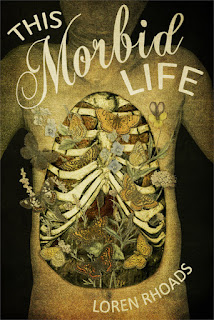This excerpt from This Morbid Life was inspired by a tour I took with Near Escapes, a small local company that visited cemeteries, "backstage" at the grand hotels, the Stanford Linear Accelerator, San Quentin Prison, and much more. This was the first tour I took with them.
Burning Desire
At the back of the warehouse stood the cremator itself. The Neptune Society used British equipment, which was acclaimed as top of the line. A computer controlled the temperature and length of burning time. The cremator had four doors, two above and two below, so that bodies could be cremated simultaneously and their ashes commingled. Before anyone could ask, Steve assured us that California state law prohibited cremation of more than one body at a time, so that ashes couldn’t get mixed by accident.
The “ovens” themselves were built of fire-resistant brick. A metal rack slid out, onto which the body was placed. Before the operator inserted a body, the cremator would be preheated to 1800 degrees Fahrenheit. As we toured the building, the ambient temperature rapidly became torrid. The ovens were warming. Apparently, at 1800 degrees, the inside of the oven glows red-hot.
Natural gas was used for the heating process. A human body provides its own fuel and will burn on its own at a high-enough temperature, so the cremator was preheated, the body placed inside, and the gas switched off to prevent overheating. Toward the end of the cremation, the gas was turned on again until the bones became calcined and brittle.
Someone asked Steve how they knew when a body was done. He recommended sticking it with a fork. Sobering up, he added that, on average, it took between one and two hours for a cremation at the Neptune Society, with an additional half hour for the oven to cool down enough to remove the cremains. All bodies burned differently, due to their levels of fat or moisture. Both cancer and AIDS deplete the body’s fat reserves, so victims of those diseases had less fuel value. Those bodies required more gas and a higher heat and might take longer to reduce to ash.
The different compositions of people also produced a variety of colors as the body burned. Sometimes the flames turned green or blue, but generally they were orange or red.
When the cremation was complete, human remains were white and very brittle. Any other discoloration implied that the cremation was unfinished. The bones might have shrunk or twisted, but they were still quite recognizable. The cremains were scooped out of the retort with a tool like a hoe. They were placed in a machine with a drum like a clothes dryer that used heavy iron balls to pulverize the remaining bones. The process was complete when the remains fit through a sieve.
I asked if I could see real human ashes. With a shrug, Steve found a beige cardboard box that was maybe five inches on a side. Inside a plastic wrapper, the cremains looked like Quaker Oats and weighed as much as an old-fashioned solid-body telephone. No one else in the tour group was interested in holding the box. In fact, they all took a step back when I held the box out to them.
Continued in This Morbid Life
a Rafflecopter giveaway





No comments:
Post a Comment